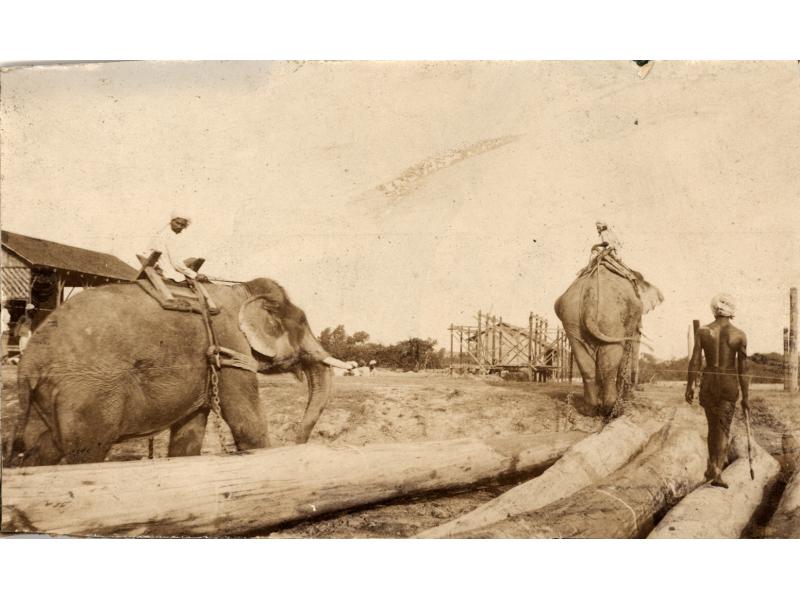Ajouter un Nouveau Commentaire
A certain toughness was bred into Duncan McIntyre from an early age. Born in Scotland, his parents immigrated to the United States, but after encountering extreme poverty the family was force to split up from their children and Duncan came to Lambton County. It was here that he was introduced to the oil industry and realised his dream of becoming a driller. At first, he worked in Western Canada drilling water wells. Then at age 35, he took his first overseas drilling contract to Persia (modern Iran) and would spend over half of his 46-year drilling career working as an International Driller in such places as India, Myanmar, and Borneo.
McIntyre's toughness was made evident in Burma (modern Myanmar), where he worked as a superintendent in the oil fields at Yenangyaung in the early years of the First World War. On September 8, 1914, McIntyre was supervising the transportation of a two-tonne pump, resting on a wagon which was being pulled by an elephant. The pump destabilized and fell off the wagon, crushing McIntyre beneath.
The field crew were eventually able to free McIntyre from underneath the pump and it took a whole day for the workers to carry him out of the jungle and to the field hospital of the Burma Oil Company. He lost consciousness at the hospital and remained that way for 10 days. A devoted Scottish nurse, Margaret E. Clark, was vital in helping McIntyre recover. He had a total of 22 broken bones, including his left knee, collar bones, right arm, and almost every rib, and news was sent home to his wife that he might not survive. Sadly, his wife Annie, who was left at home with five children, could not handle this added stress, and walked into the St. Clair River and drowned herself.
After several months of recuperation, McIntyre made the 12,000-mile journey home and was well enough to disembark in New York using a cane. It wasn't until he arrived home and when his son met him at the train station that he learned of his wife's death. He remained at home for about a year but caught the bug again and returned to Burma (modern Myanmar) until his retirement in 1930.



 Duncan McIntyre (standing, left) with other International Drillers from Petrolia in Persia (modern Iran), 1908.
Duncan McIntyre (standing, left) with other International Drillers from Petrolia in Persia (modern Iran), 1908.  The Yenangyaung oil field, Burma (modern Myanmar) where Duncan McIntyre worked as a field superintendent.
The Yenangyaung oil field, Burma (modern Myanmar) where Duncan McIntyre worked as a field superintendent.  Duncan McIntyre was using an elephant to pull a cart holding a two-tonne pump when the pump fell on him, breaking 22 bones.
Duncan McIntyre was using an elephant to pull a cart holding a two-tonne pump when the pump fell on him, breaking 22 bones.